This article will demonstrate how to change your Expiry Date to be an earlier date, by working through the process we call a “decrease in lease term”. We've created this best practice guide for changing your Expiry Date to ensure you don't experience any issues in IFRS 16 reporting, or changes to your opening / transition take-up balances.
Please review our article on Extending a Lease Term if you're looking to change your Expiry Date to be a later date.
Please note: This process doesn't require changing the Expiry event or any other scheduled events on the event timeline of your Agreement. The original Expiry event will remain in place through this best-practice process. This is to ensure the change is recorded correctly in your reports and doesn't change your IFRS 16 calculations.
If you're trying to decrease your IFRS 16 Reporting term by changing the Expected Number of Renewals selected, please refer to our other article here.
Video Tutorial: How to Process a Decrease in Lease Term
Check out this video on how to process a Decrease in Lease Term on your Agreement, or continue reading below.
How to Process a Decrease in Lease Term
Before you begin, we recommend you run the Journal Report over the life of the Agreement, being sure to include the opening / transition take-up balances. By having these balances recorded before you make any changes, it will be easier for you to confirm that the opening / transition take-up balances have not changed throughout the process. Knowing these balances is also useful should a mistake be made at any point in the process, as you will know the balances you need to get back to when you / our Support Team is recording a fix.
To decrease the length of an existing term in your Agreement:
- On your Agreement, click “Action”, then “Create / Edit Events”.
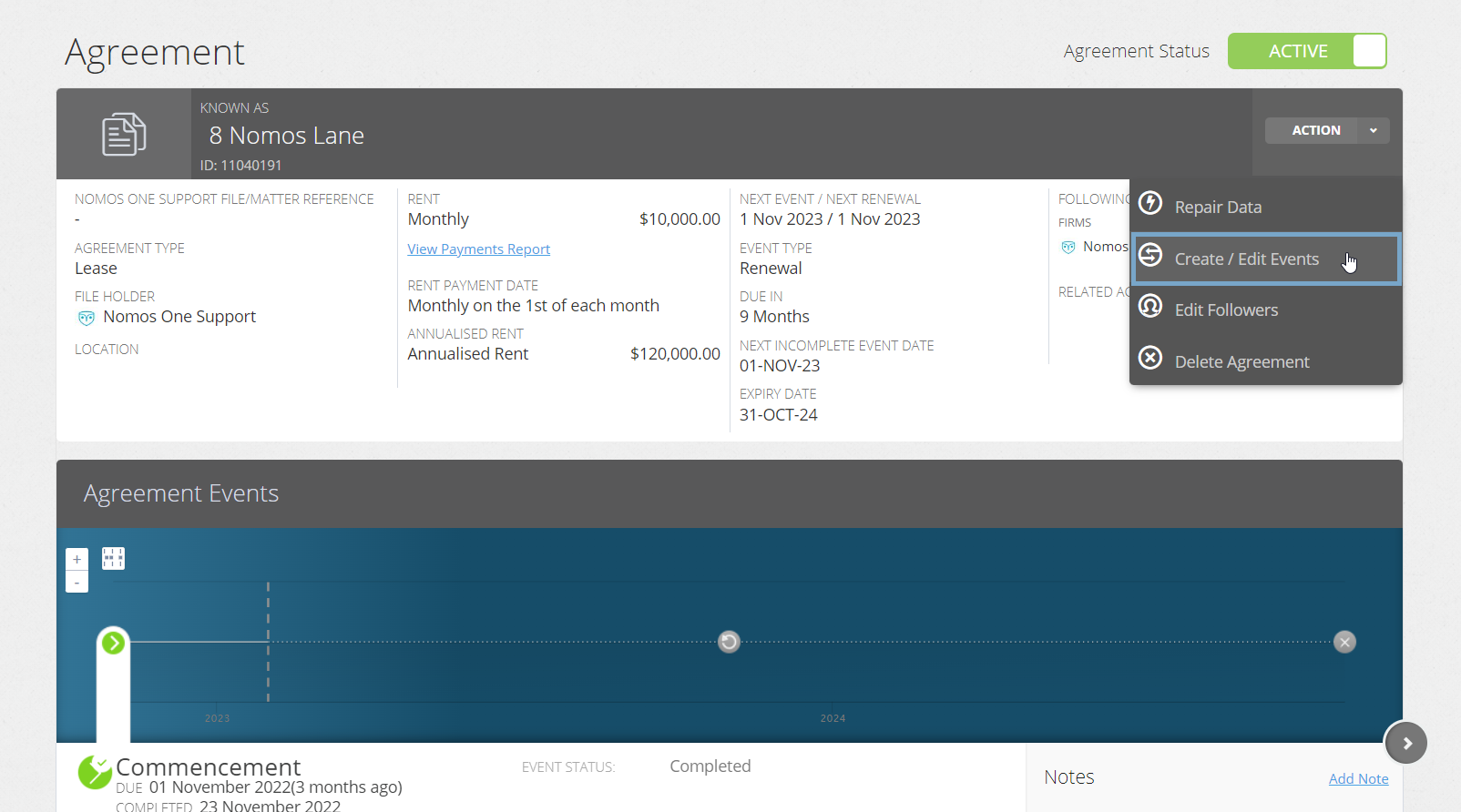
- On the Events page, scroll to the Variation section and click “Edit”.
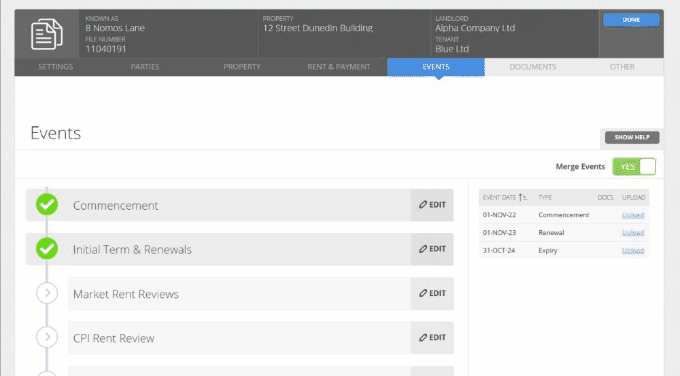
- Using the calendar tool or text field, add in a Variation Event for the date you agreed to decrease the term in your Agreement. Remember to click “Add”.
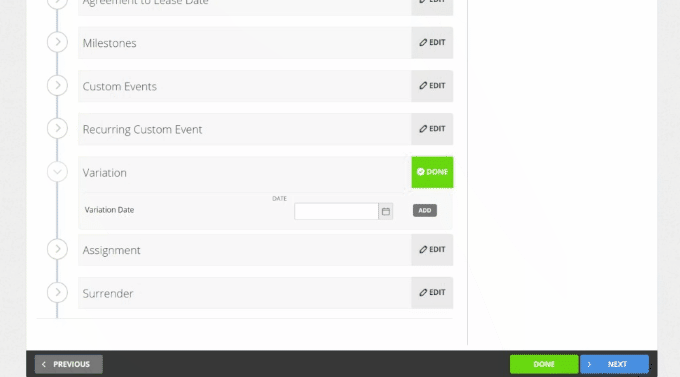
Please note: If you need your Agreement to expire on the date of the Variation, we recommend you use a Surrender Event instead, as this will terminate your Agreement immediately. If you're unsure at any step, feel free to contact our Support Team at support@nomosone.com and we'll be able to help you out.
- Once you've added in your Variation Event, click “Done” at the top of the page to return to the Agreement Timeline.
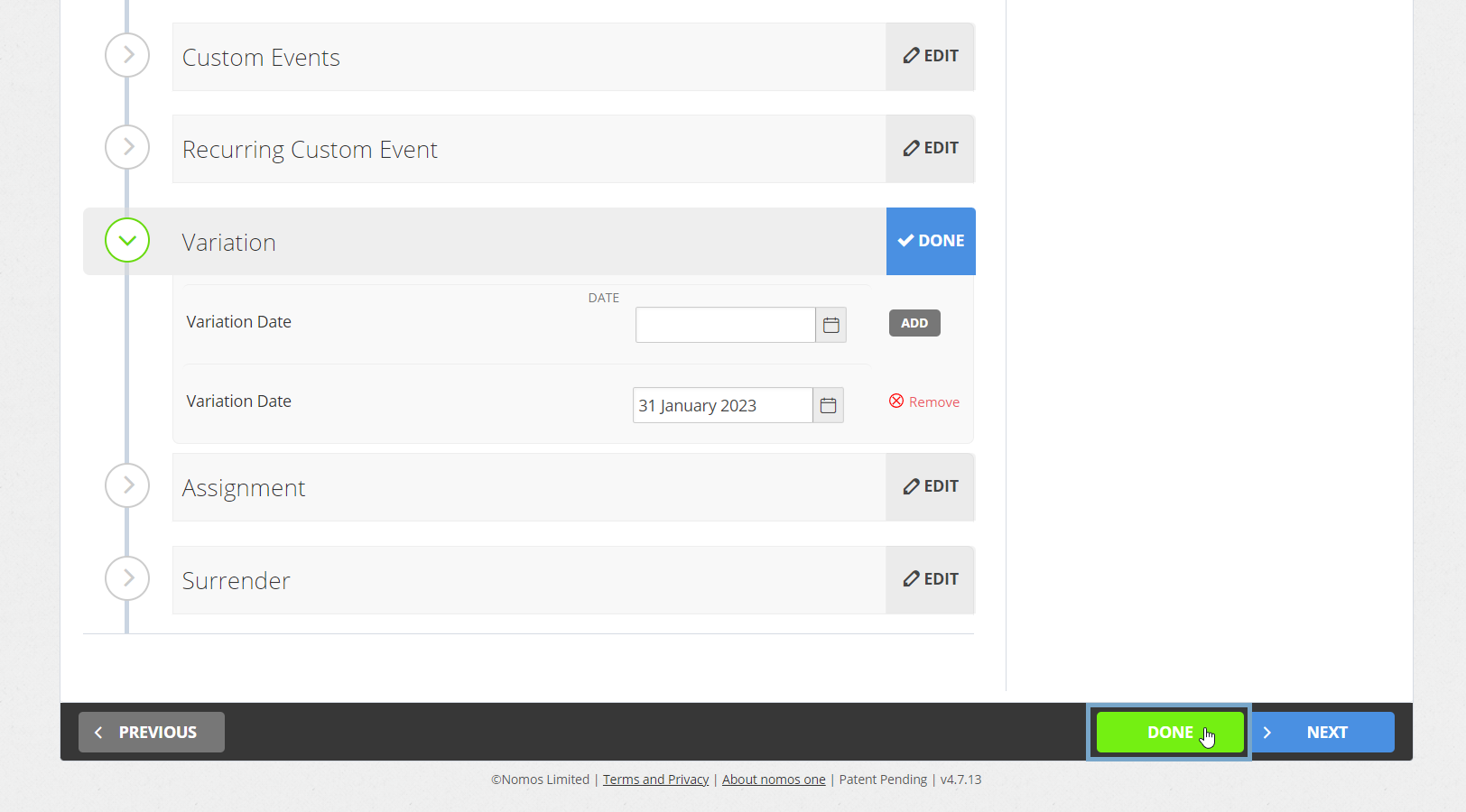
- On the Agreement Timeline, click on the Variation Event icon and then click “Start Event”.
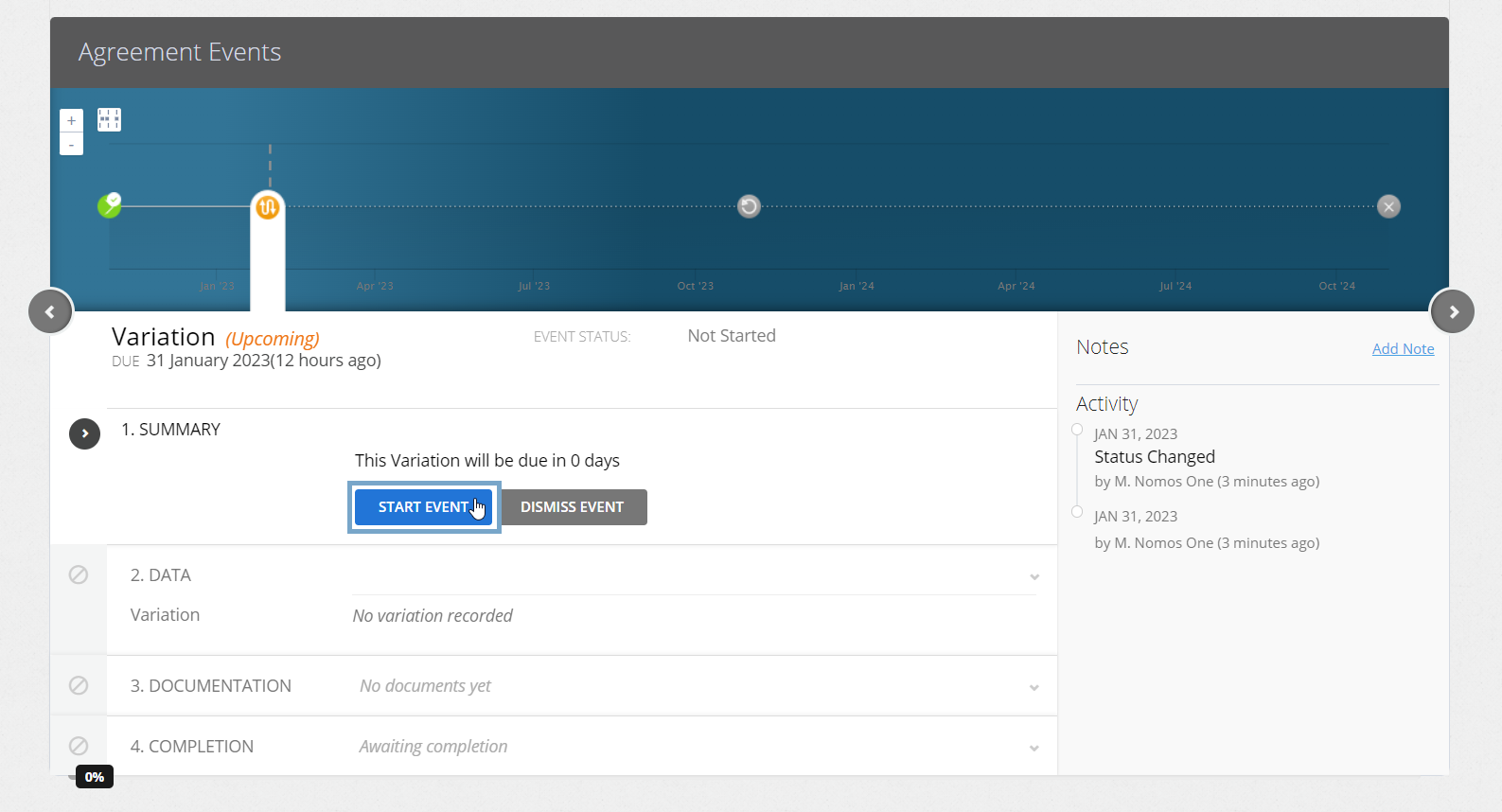
While you can add Events on a date that is within a locked period, you cannot complete these Events on the Agreement Event Timeline. If your Variation Event is within a locked period, you'll need to ask a user with the Administrator permission in your Organisation to edit the Lock Date before you can complete the Event. Check out this article for more information.
- At Step 2, if there are any changes to the contractual data of your Agreement which take effect from the Variation date, click “Yes” and record these changes through the usual Variation workflow. If there are no other changes to your Agreement effective from the Variation date, you can simply click “No”, then click “Next” to continue.
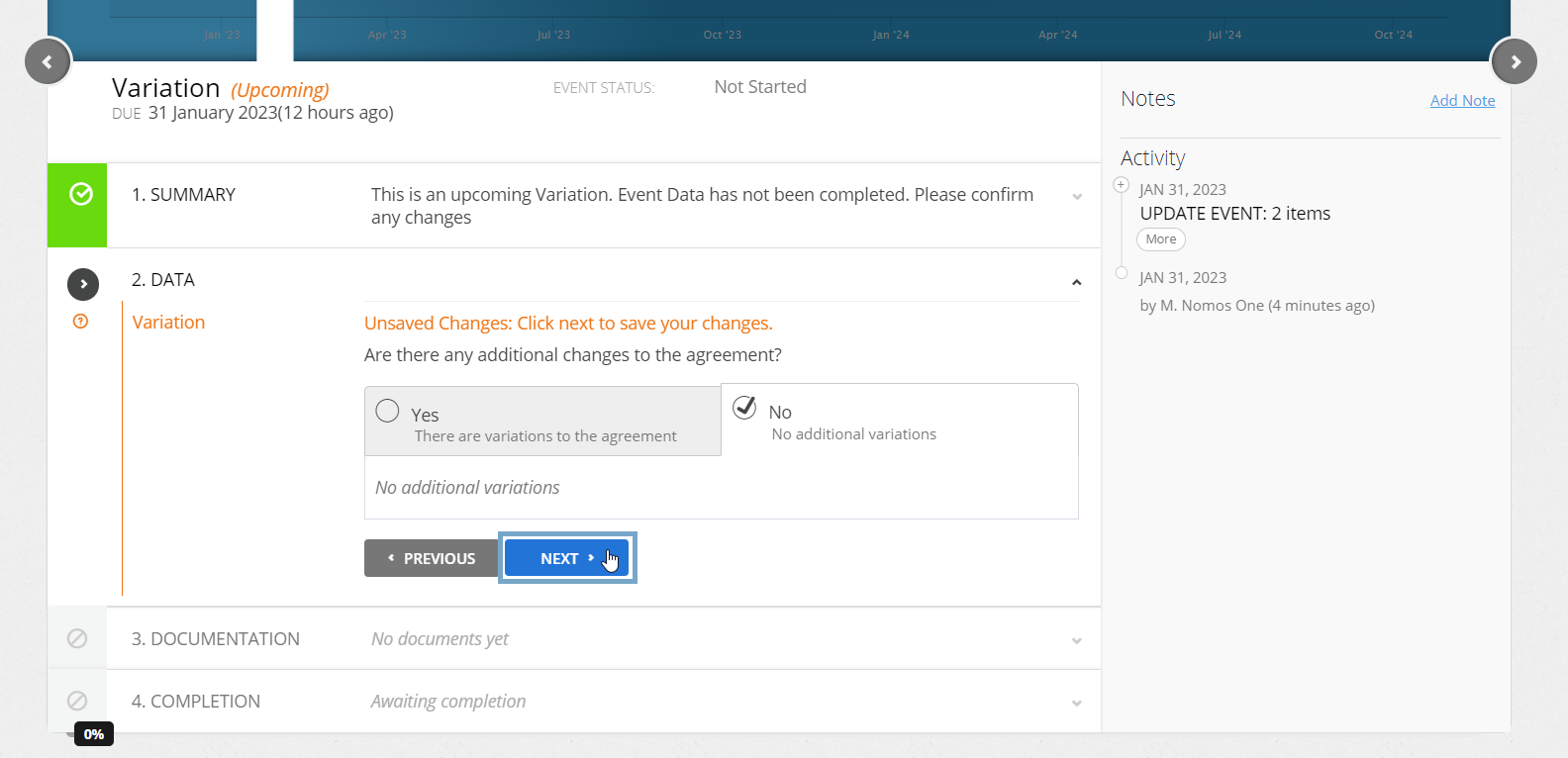
Please note: When completing this Variation Event, at Step 2, you're not required to alter the length of the terms in your Agreement. If you do need to add in other changes to your contractual data at this stage, check out our Variation guide for a refresher on what can and can't be changed in a Variation Event.
Importantly, please note that if you're decreasing the term length, you'll need to keep any rent reviews, renewal events, and the original expiry event on the timeline. If you remove these, your opening balance and historic reporting figures could be changed. We also currently can't process changes to the date(s), frequency, or type of rent review events within reporting periods reflected in IFRS 16 reporting. If you adjust any rent review events within your current reporting period this will result in a change to your opening/historic balances.
- Upload any supporting documentation, or select “No Documentation” and click “Next”.

- Click “Complete” to finish the event completion process.
- On the completed Variation Event, you'll need to update the IFRS 16 Settings Change Questionnaire to ensure your decrease in lease term is reflected in financial reporting. To do this, select the option “Yes” on the IFRS Settings Change questionnaire.

- Scroll to the Termination Payment section, and toggle 'Is there a change in the estimate of the termination payment?' to read Yes. You'll then need to:
- Use the calendar tool to record the “Effective date of change”. This should match the date of the Variation event.
- Record the “New expected Termination Date”. This will determine the expiry date of IFRS 16 reporting.
- If the discount/interest rate has changed, effective from the same date, you can record a new rate here.

- Scroll to the bottom of the Settings Change Questionnaire and click “Save”.

- Run the Journal report across the Variation event date. You should see an entry for a “Decrease in Lease Term”.

Add a Custom Event for the New Expiry Date
You'll notice in this process that the original Expiry event has not changed. This is to ensure that your reporting is correct and there are no changes to your IFRS 16 Opening Balances. To reflect the new expiry date, you can create a Custom Event. This means you can see the date represented on the Agreement Timeline, receive notifications when the date approaches, and report on the event in Contractual Reports.
To create a Custom Event for the new Expiry date:
- On your Agreement, click “Action”, then “Create / Edit Events”.

- Scroll to the “Custom Events” section and click “Edit”.

- For the “Event type” field, enter something like “Expiry” or “Actual Expiry”. In the “Date” field, enter the new actual expiry date. Click “Add”. Once added, you can add further context to the “Notes” field.

- Click “Done” at the top or bottom of the page to return to the Agreement Timeline.

You'll now see “Custom: Expiry” as an event on your Agreement Timeline.

By adding a custom Expiry Event, you're also able to report on Agreements where you have decreased the Lease Term. Using the Custom Events Report, you can add a Filter for whatever naming convention you have chosen for the custom expiry events.

Optional step for lease/portfolio management tracking:
We understand that this method of processing a decrease in term does not automatically produce a 'display note' that tracks the decrease within the Variation event. If you'd like to have a record of this decrease noted against the event, you can use one of the following options:
- Add a note to your completed Event.
- Update the File Notes of your Agreement when completing the Variation Event to note this change.
- At the Documentation step in the Event Completion process, if you don't have any supporting documentation to load against the Variation event, you can always click “No documentation”, then “Other” and provide a note about the terms of the decease/reduction. Please note this method will not be available if you're uploading documentation.
Nomos One does not provide or purport to provide any accounting, financial, tax, legal or any professional advice, nor does Nomos One purport to offer a financial product or service. Nomos One is not responsible or liable for any claim, loss, damage, costs or expenses resulting from your use of or reliance on these resource materials. It is your responsibility to obtain accounting, financial, legal and taxation advice to ensure your use of the Nomos One system meets your individual requirements.